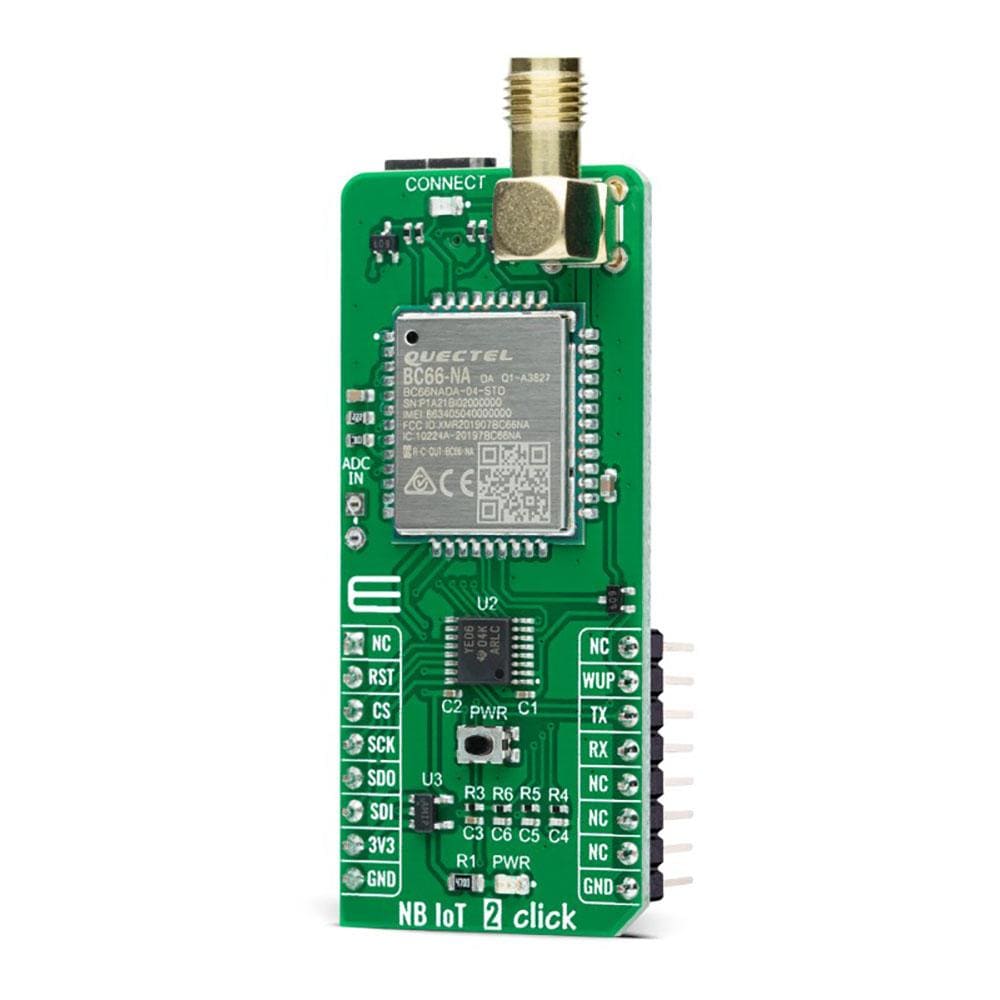
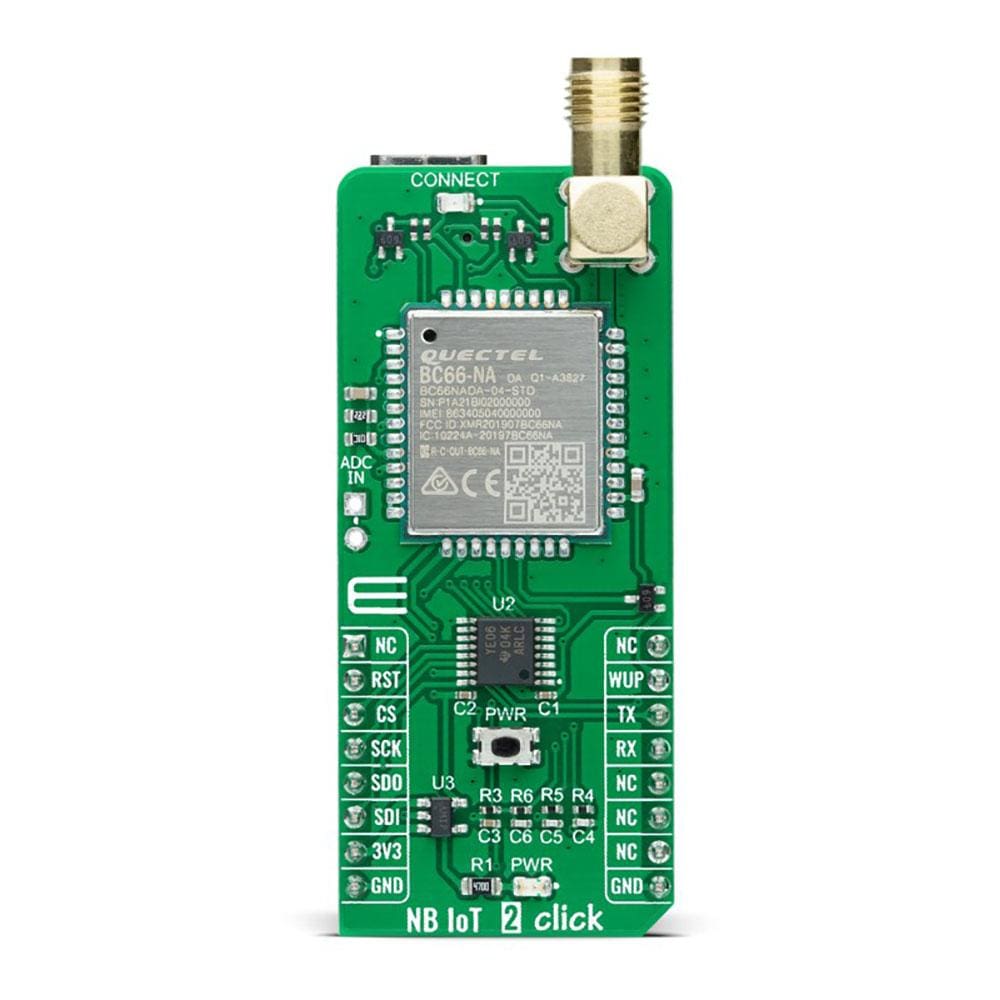
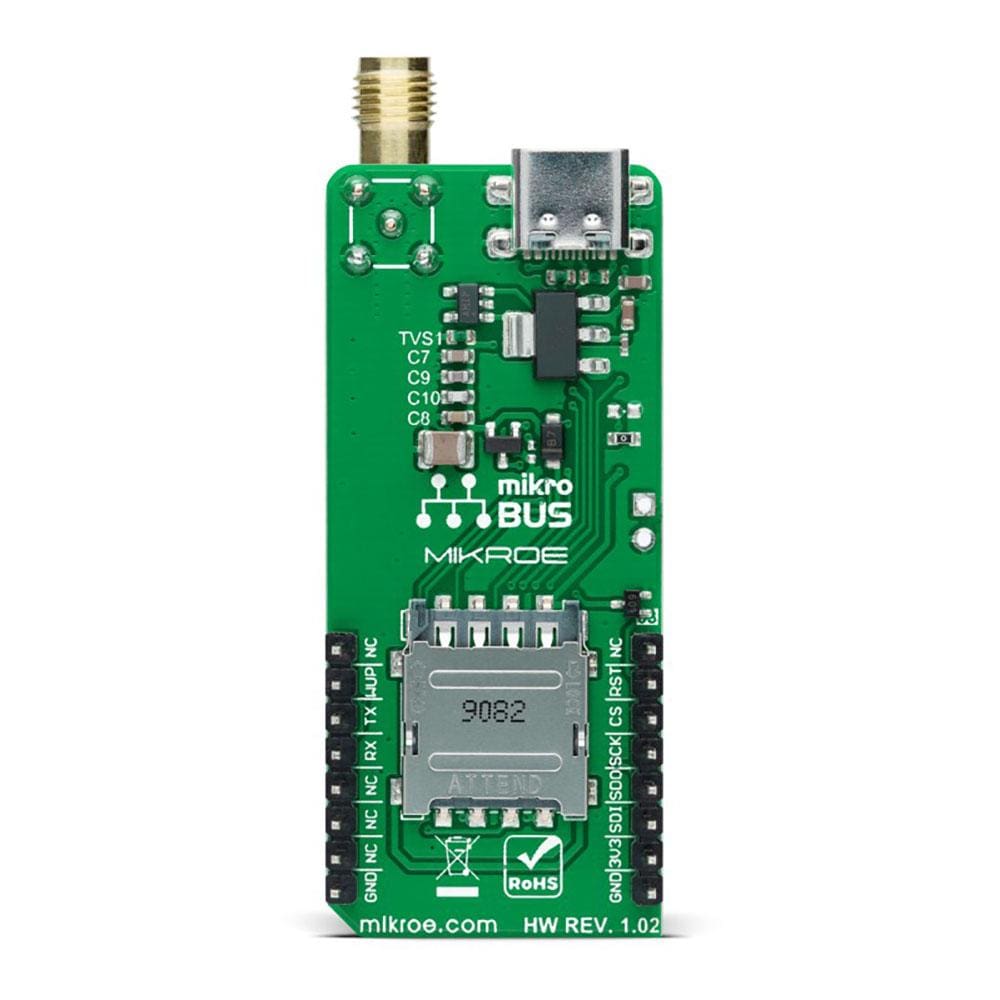
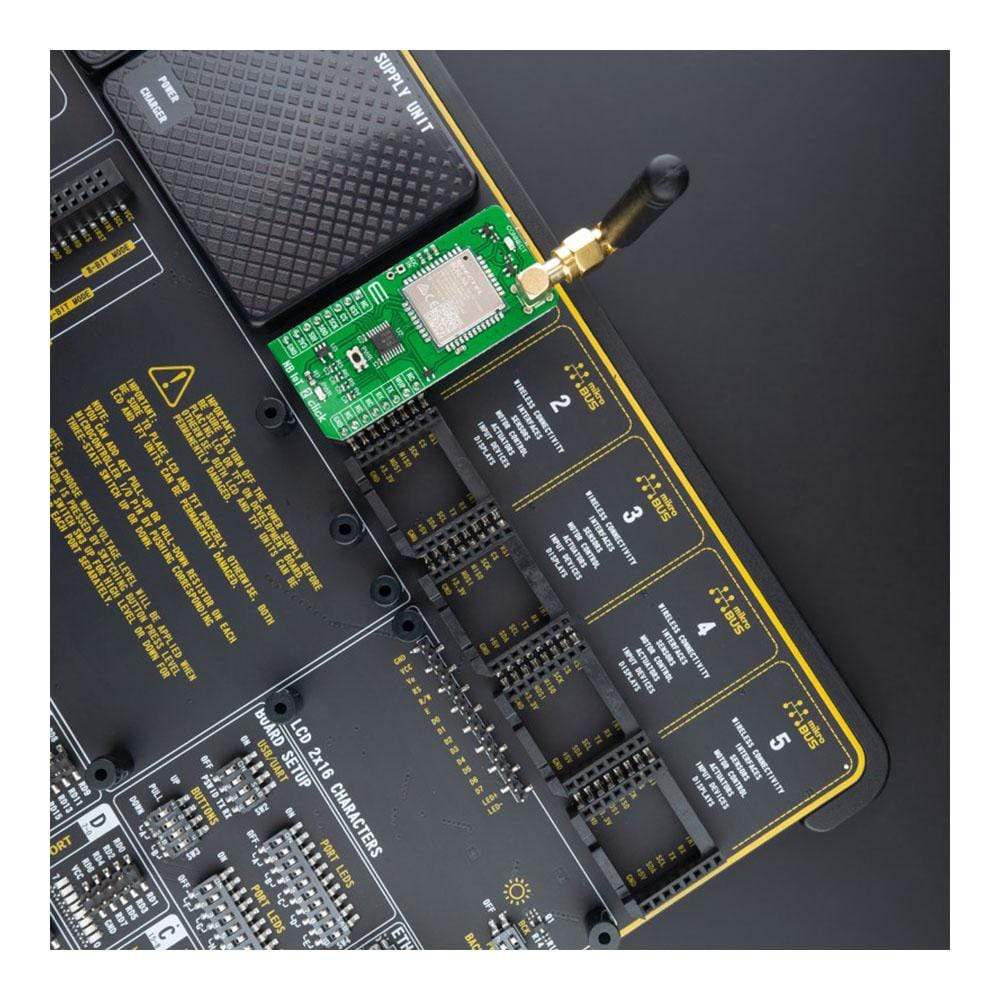
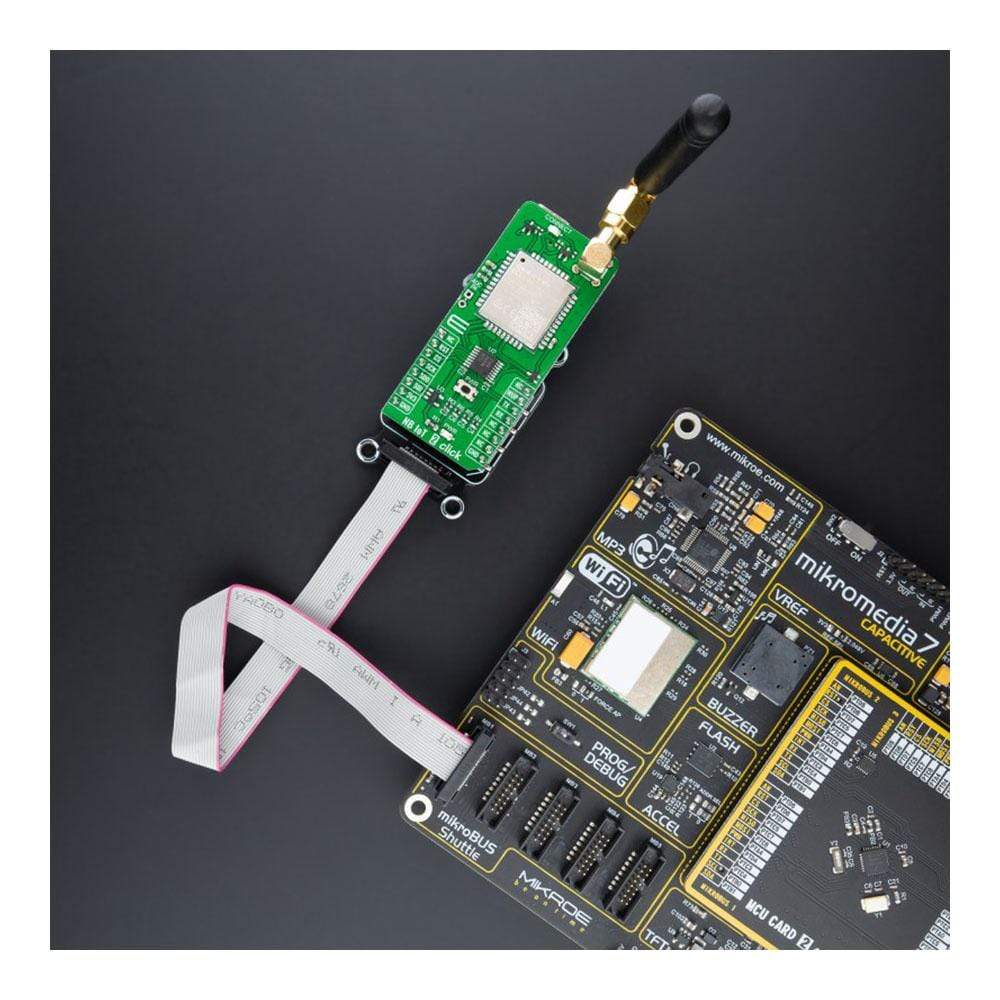
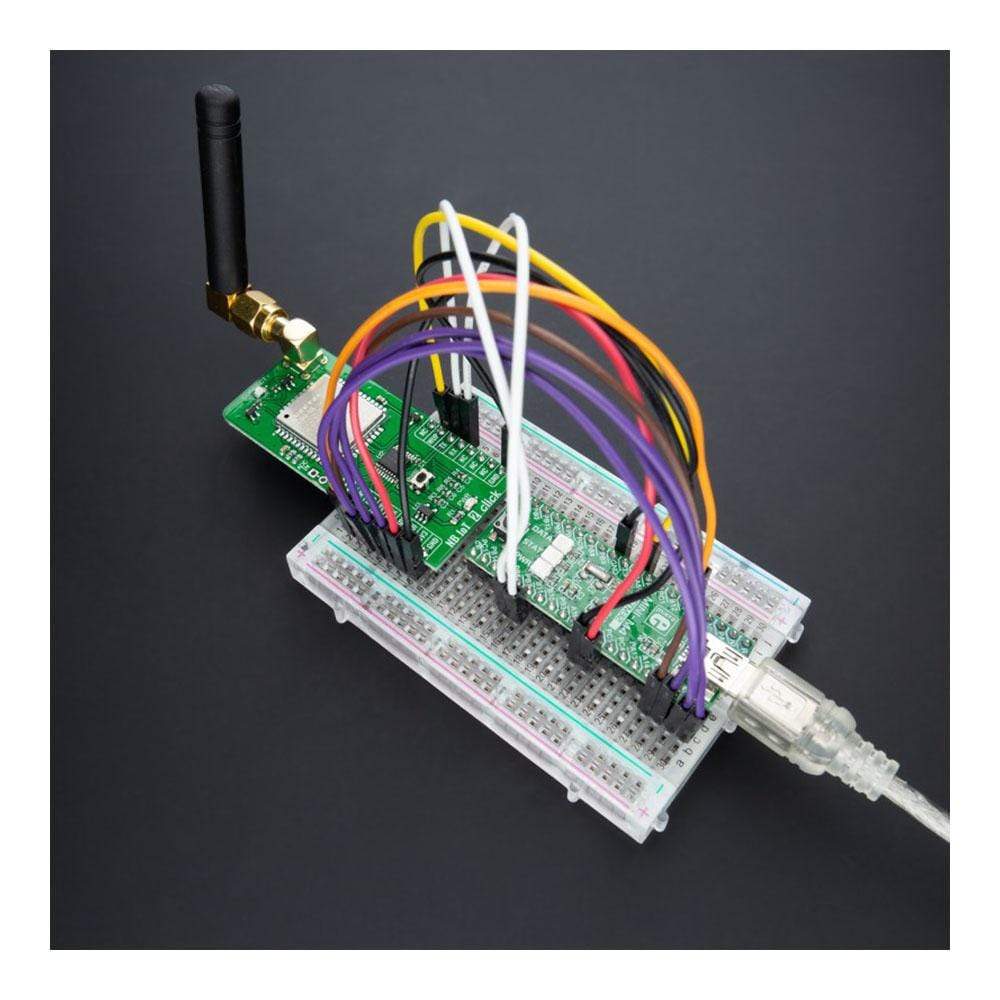
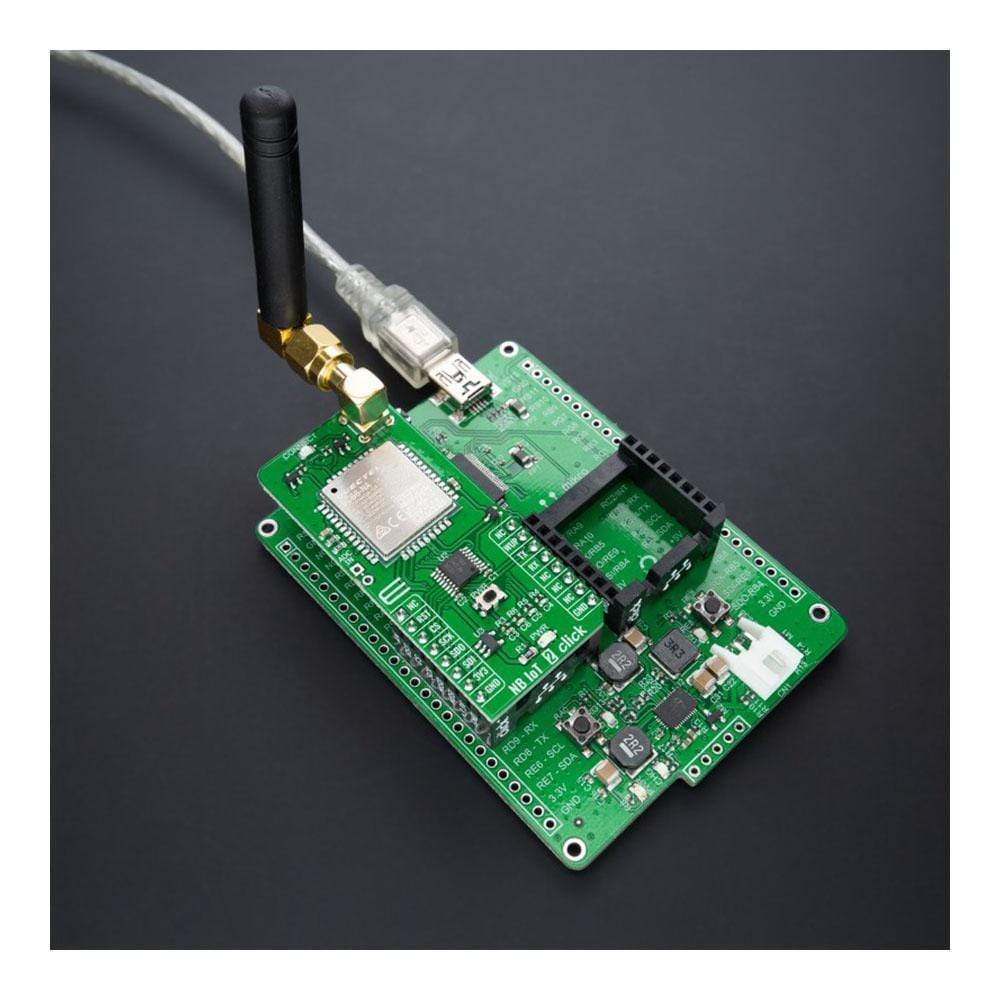
Overview
The NB IoT 2 Click Board™ is a compact add-on board that contains a compact LTE Cat NB2 module with ultra-low power consumption. This board features the BC66-NA, a high-performance, multi-band LTE Cat NB2 module with extremely low power consumption from Quectel Wireless Solutions. It provides a flexible and scalable platform for migrating from GSM/GPRS to the NB-IoT network and supports band 71 and band 85 to accommodate more operators. It also offers external interfaces, protocol stacks (providing great convenience for your applications), and a complete range of SMS and data transmission services to meet client-side demands. This Click Board™ is suitable for a wide range of IoT applications, such as smart metering, intelligent wearables, security and asset tracking, home appliances, environmental monitoring, and many more.
The NB IoT 2 Click is supported by a mikroSDK compliant library, which includes functions that simplify software development. This Click Board™ comes as a fully tested product, ready to be used on a system equipped with the mikroBUS™ socket.
Downloads
Der NB IoT 2 Click Board™ ist eine kompakte Zusatzplatine, die ein kompaktes LTE Cat NB2-Modul mit extrem niedrigem Stromverbrauch enthält. Diese Platine verfügt über das BC66-NA, ein leistungsstarkes Multiband-LTE Cat NB2-Modul mit extrem niedrigem Stromverbrauch von Quectel Wireless Solutions. Es bietet eine flexible und skalierbare Plattform für die Migration von GSM/GPRS zum NB-IoT-Netzwerk und unterstützt Band 71 und Band 85, um mehr Betreiber zu unterstützen. Es bietet außerdem externe Schnittstellen, Protokollstapel (für hohen Komfort für Ihre Anwendungen) und eine vollständige Palette von SMS- und Datenübertragungsdiensten, um die Anforderungen der Clientseite zu erfüllen. Dieses Click Board™ eignet sich für eine Vielzahl von IoT-Anwendungen, wie z. B. Smart Metering, intelligente Wearables, Sicherheit und Anlagenverfolgung, Haushaltsgeräte, Umweltüberwachung und vieles mehr.
Der NB IoT 2 Click wird durch eine mikroSDK-kompatible Bibliothek unterstützt, die Funktionen enthält, die die Softwareentwicklung vereinfachen. Dieses Click Board™ wird als vollständig getestetes Produkt geliefert und ist bereit für den Einsatz auf einem System, das mit der mikroBUS™-Buchse ausgestattet ist.
| General Information | |
|---|---|
Part Number (SKU) |
MIKROE-4562
|
Manufacturer |
|
| Physical and Mechanical | |
Weight |
0.02 kg
|
| Other | |
Country of Origin |
|
HS Code Customs Tariff code
|
|
EAN |
8606027382475
|
Warranty |
|
Frequently Asked Questions
Have a Question?
Be the first to ask a question about this.







